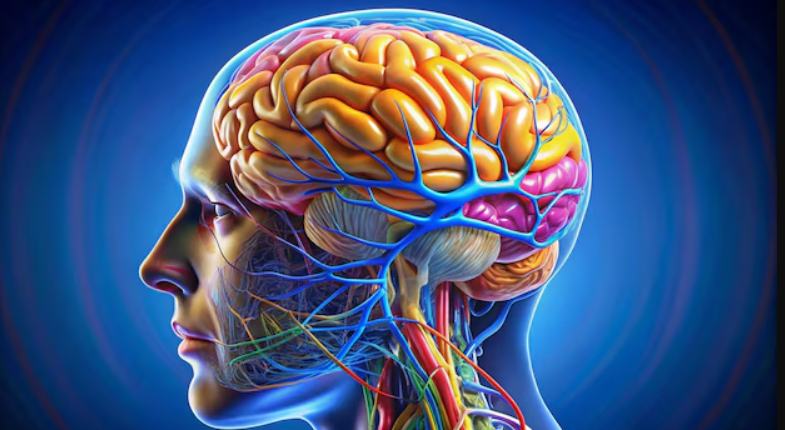Cerebral palsy
Cerebral Palsy (CP) is a condition caused by damage to or abnormal development of the brain, usually occurring before birth or during early childhood. It affects muscle tone, movement, and coordination. Here’s an overview of the types, symptoms, causes, diagnosis, and management options for cerebral palsy
Types of Cerebral Palsy (CP)
Spastic Cerebral Palsy:
- This type affects around 70-80% of people with CP.
- Characteristics:
- Stiff or tight muscles (spasticity) in certain parts of the body.
- Difficulty moving and maintaining posture.
- Can impact one or both sides of the body:
- Spastic Hemiplegia: Affects one side of the body (arm and leg).
- Spastic Diplegia: Primarily affects the legs, with less severe impact on the arms.
- Spastic Quadriplegia: Affects all four limbs and usually the face and trunk; may have severe coordination and mobility challenges.
Dyskinetic Cerebral Palsy (also called Athetoid CP):
- Characteristics:
- Uncontrollable, involuntary movements that can be slow (athetosis), jerky, or writhing.
- Muscle tone that fluctuates between being tight and loose.
- Movements may affect the face, tongue, arms, and legs, causing issues with speech and coordination.
- Characteristics:
Ataxic Cerebral Palsy:
- This is the rarest form of CP.
- Characteristics:
- Problems with balance and coordination.
- Difficulty with fine motor tasks (e.g., writing, buttoning clothes).
- Tremors and shaky movements, often worsened by voluntary movements.
Mixed Cerebral Palsy:
- Combines symptoms from more than one type of CP, e.g., spastic-dyskinetic.
Symptoms of Cerebral Palsy
Symptoms vary widely and depend on the areas of the brain that are affected. Common symptoms include:
Motor Symptoms:
- Abnormal muscle tone (too stiff or too floppy).
- Difficulty walking, maintaining posture, or sitting up.
- Poor balance and coordination.
- Tremors, involuntary movements, or spasticity.
- Challenges with fine motor skills, such as writing or using utensils.
Speech and Eating:
- Difficulty speaking clearly (dysarthria) or inability to speak.
- Problems swallowing (dysphagia).
- Difficulty controlling saliva.
Sensory and Cognitive Issues:
- Visual and hearing impairments.
- Learning disabilities or delays.
- Behavioral challenges or emotional difficulties.
Other Symptoms:
- Pain due to muscle tightness or orthopedic problems.
- Fatigue caused by the extra energy required to move muscles.
- Seizures or epilepsy (present in about 30-50% of individuals with CP).
Causes of Cerebral Palsy
- Prenatal Causes (Before Birth):
- Genetic mutations or brain malformations.
- Infections during pregnancy (e.g., rubella, cytomegalovirus).
- Lack of oxygen supply to the brain (hypoxic-ischemic injury).
- Maternal health issues, including high blood pressure or infections.
- Perinatal Causes (During Birth):
- Complicated or premature birth, causing trauma or oxygen deprivation.
- Low birth weight.
- Postnatal Causes (After Birth):
- Brain injuries (e.g., head trauma, near-drowning incidents).
- Infections like meningitis or encephalitis.
Diagnosis of Cerebral Palsy
- Observation of Development:
- Delays in motor milestones (e.g., crawling, walking).
- Abnormal reflexes or muscle tone noticed by parents or doctors.
- Medical History and Physical Exams:
- Assessing muscle tone, reflexes, coordination, and movement.
- Brain Imaging Tests:
- Magnetic Resonance Imaging (MRI): Detects brain abnormalities.
- Computed Tomography (CT): May show structural issues or damage.
- Ultrasound: Useful for infants.
- Additional Tests:
- Blood tests to rule out other conditions.
- Genetic testing if a genetic cause is suspected.
Living with Cerebral Palsy
CP is a non-progressive condition, but symptoms can change or worsen over time due to secondary factors like joint issues, muscle tightness, or aging. Here are some ways to manage it:
Physiotherapy:
- Focuses on improving mobility, posture, and strength.
- May involve stretching exercises, balance activities, and using mobility aids (e.g., wheelchairs, walkers).
Occupational Therapy:
- Helps individuals adapt to daily tasks.
- Provides assistive devices to promote independence, such as adapted utensils or communication tools.
Speech and Language Therapy:
- Helps with speech clarity and language skills.
- Assists with swallowing and communication strategies, including augmentative and alternative communication (AAC) devices.
Orthotic Devices:
- Custom braces or splints that support limbs, correct deformities, or assist movement.
- Use may be temporary or lifelong depending on individual needs.
Medications:
- Muscle Relaxants: Baclofen or Diazepam for spasticity.
- Botulinum Toxin (Botox): Reduces muscle tightness in specific areas.
- Anti-seizure Medications: For managing epilepsy.
Surgery:
- May be considered for severe muscle or bone deformities.
- Orthopedic Surgery: Corrects bone or joint problems.
- Selective Dorsal Rhizotomy (SDR): Reduces spasticity by cutting nerve fibers.
Mental Health Support and Counseling
- Addressing anxiety, depression, and social isolation through therapy or support groups.
Support for Families
- Resources, support groups, and educational programs help families navigate the challenges of living with cerebral palsy.
Prognosis and Outlook
- CP doesn’t generally affect life expectancy unless associated with severe health complications.
- Early intervention, tailored therapies, and ongoing medical care can improve quality of life and functional independence.
- Adaptability and individualized treatment plans play a key role in managing the condition over time.
Cerebral palsy is a complex condition that requires a multidisciplinary approach tailored to each individual’s unique needs. It involves collaboration among healthcare providers, therapists, educators, and families to help maximize independence and well-being.







